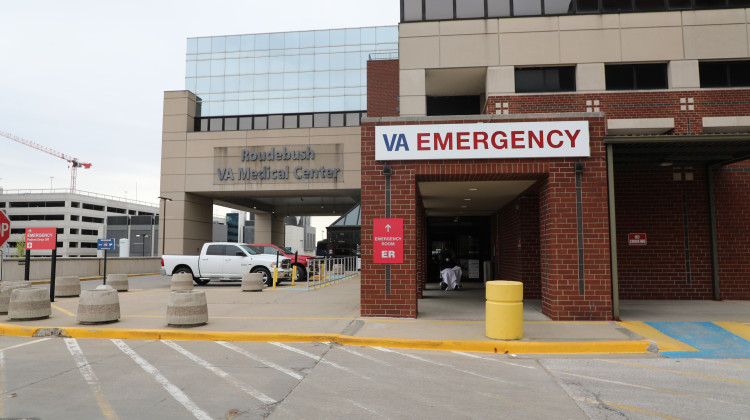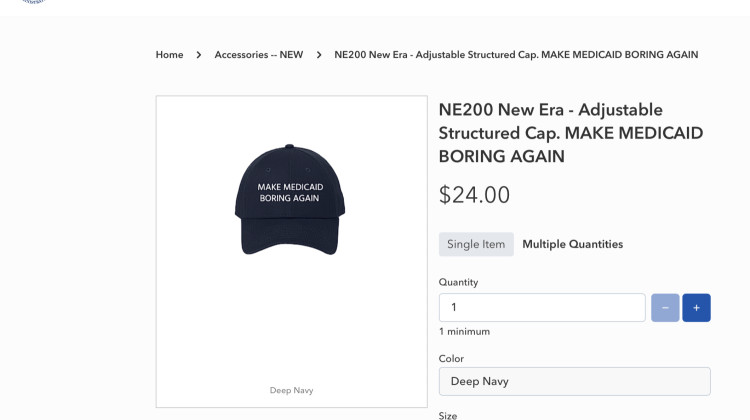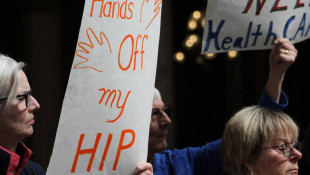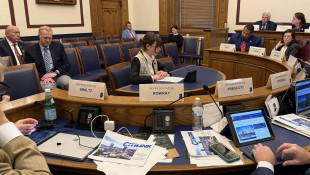
Gov. Eric Holcomb signed a letter to President Biden saying the ongoing federal public health emergency is negatively affecting states, "primarily by artificially growing our population covered under Medicaid, regardless of whether individuals continue to be eligible under the program."
Brandon Smith/IPB NewsGov. Eric Holcomb joined 24 other state governors in signing an open letter to President Biden, asking him to end the federal public health emergency in April 2023.
The public health emergency was first declared in 2020 after the COVID-19 pandemic hit.
“We have come so far since the beginning of the pandemic — we now have the tools and information necessary to help protect Iowans from COVID-19,” Iowa Gov. Kim Reynolds said in a statement. “We have returned to life as normal and it is time the federal government’s policies reflected that.”
The governors represent the states of New Hampshire, Arizona, Georgia, Iowa, Missouri, North Dakota, South Carolina, Alabama, Arkansas, Idaho, Massachusetts, Montana, Ohio, South Dakota, Alaska, Florida, Indiana, Mississippi, Nebraska, Oklahoma, Tennessee, Texas, Wyoming, Utah and Virginia.
The federal public health emergency has required states to provide continuous coverage for people on Medicaid, in exchange for a bump in federal Medicaid dollars.
Prior to the pandemic, people on Medicaid had to participate in periodic eligibility checks, led by state Medicaid agencies, to ensure they still qualify for the program. Some states, like Indiana, also required people to contribute monthly premiums to get the highest level of coverage.
All of these pre-pandemic measures have been paused since the federal public health emergency took effect, as part of an attempt to avoid health insurance coverage gaps as people deal with COVID-related health care needs and economic fallout like job loss.
Now in its third year, some state officials say the emergency declaration is taking an economic toll on state Medicaid programs.
“The [public health emergency] is negatively affecting states, primarily by artificially growing our population covered under Medicaid, regardless of whether individuals continue to be eligible under the program,” the governors said.
The number of people covered by Medicaid across the U.S grew to 90 million in July 2022 –– a 26 percent increase from February 2020, according to a Kaiser Family Foundation analysis. The governors argue that this has stretched their Medicaid resources thin.
Medicaid is a partnership between states and the federal government, and so, the governors argue that even with the enhanced federal funding that helped blunt the increased costs of covering more people, states have also had to increase their non-federal match to cover enrollees.
When the public health emergency ends, states will once again return to conducting periodic eligibility checks, through a process known as redetermination, to ensure that those who are enrolled in Medicaid are in fact eligible.
“We know that a considerable number of individuals have returned to employer sponsored coverage or are receiving coverage through the individual market, and yet states still must still account and pay for their Medicaid enrollment in our non-federal share. This is costing states hundreds of millions of dollars,” the governors said.
The U.S. Centers for Medicare and Medicaid Services requires states to come up with plans for how they will unwind Medicaid coverage when the public health emergency ends – and to outline their timeframe and how they’ll prioritize renewals. CMS said it would give states a 60-day notice before the public health emergency expires.
But it has been a challenge for state officials across the country to solidify plans because the end date of the public health emergency has been changing for a while – making it difficult to develop Medicaid budgets or prepare resources like staffing.
Nationwide, between five and 14 million Medicaid enrollees risk losing their coverage if they’re unable to maintain their eligibility through the required paperwork. Advocates are worried that many who may be eligible could end up with coverage gaps if they are unable to navigate the system or are unaware that the process is changing when the public health emergency ends.
“The [public health emergency] has led to increased access to preventative care, kept vulnerable children and adults healthy, and allowed our state to make strides in improving health outcomes – all while lowering administrative burdens,” said Mark Fairchild of Covering Kids & Families Indiana.
“We would like to see Indiana investigate ways to keep these consumer protections in place, while maintaining lower administrative burdens to the state, prior to the end of the federal [public health emergency].”
The Biden administration has extended the public health emergency until at least January 2023. The governors are asking the Biden administration to let it expire in April 2023 –– giving states several months to prepare.
“That first month when redeterminations come through, it's… going to be higher than we've ever seen in the history of the state of Indiana,” said Brian Arrowood, chief communications officer of the Indiana FSSA.
These concerns are shared across the country. The National Association for Medicaid Directors has sent a letter to the federal government saying that the uncertainty around when the public health emergency will end is “no longer tenable.”
The NAMD is a bipartisan non-profit organization that represents leaders of state Medicaid agencies across the U.S. Their letter said that the uncertainty around the end date “creates immense variability in budget scenarios and erodes Medicaid leaders’ credibility with their governors and legislatures. It also inhibits the ability for state and county eligibility entities to know when to deploy staffing resources.”
This story comes from a reporting collaboration that includes the Indianapolis Recorder and Side Effects Public Media — a public health news initiative based at WFYI. Contact Farah at fyousry@wfyi.org. Follow on Twitter: @Farah_Yousrym.
 DONATE
DONATE





 View More Articles
View More Articles




 Support WFYI. We can't do it without you.
Support WFYI. We can't do it without you.